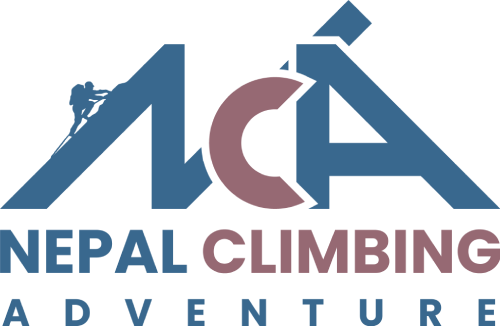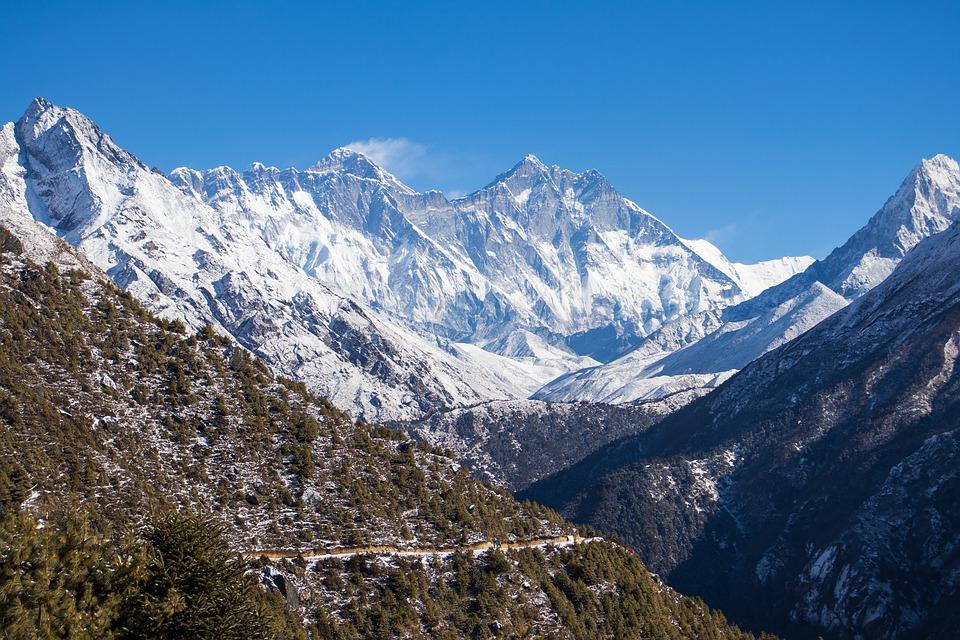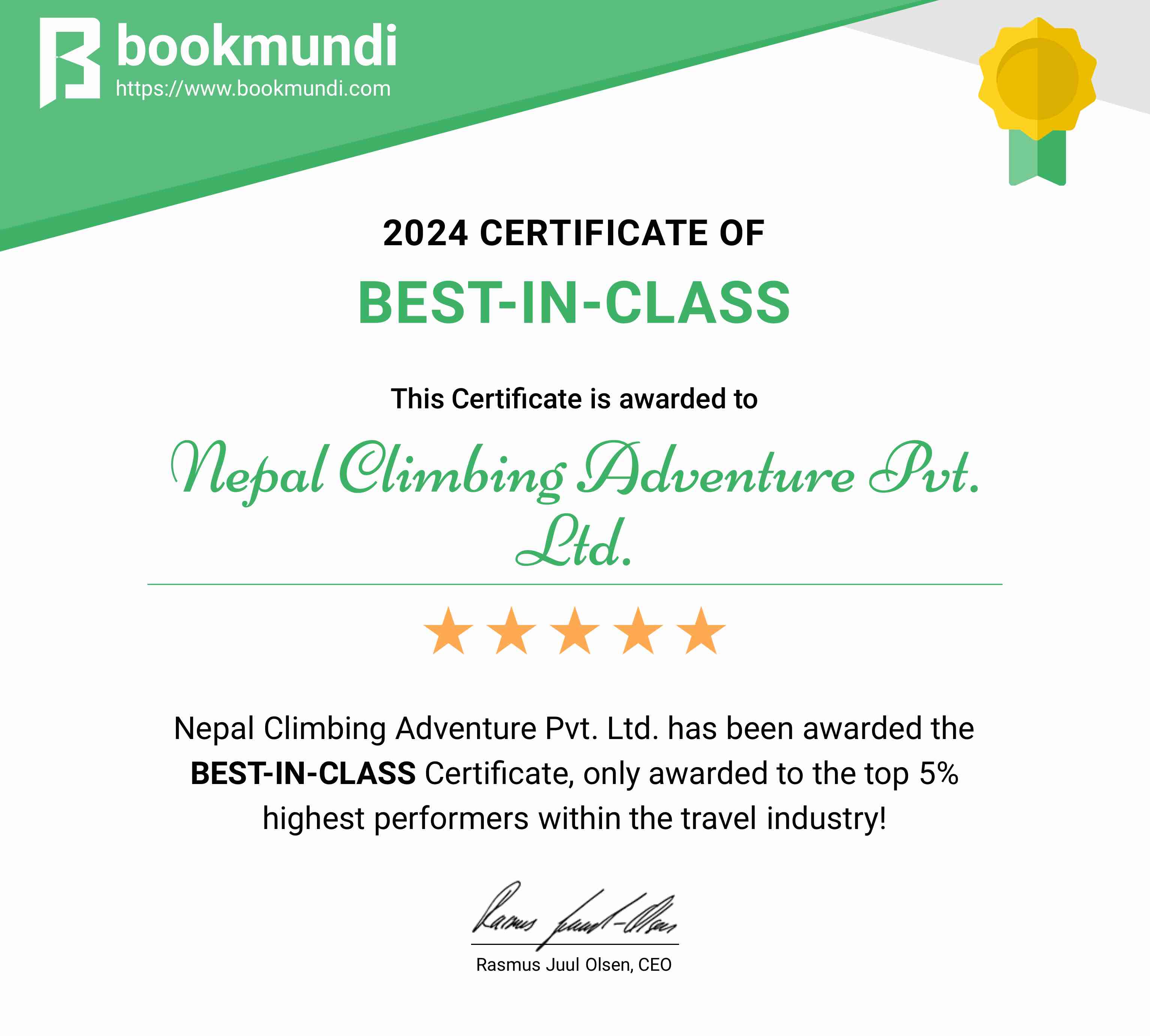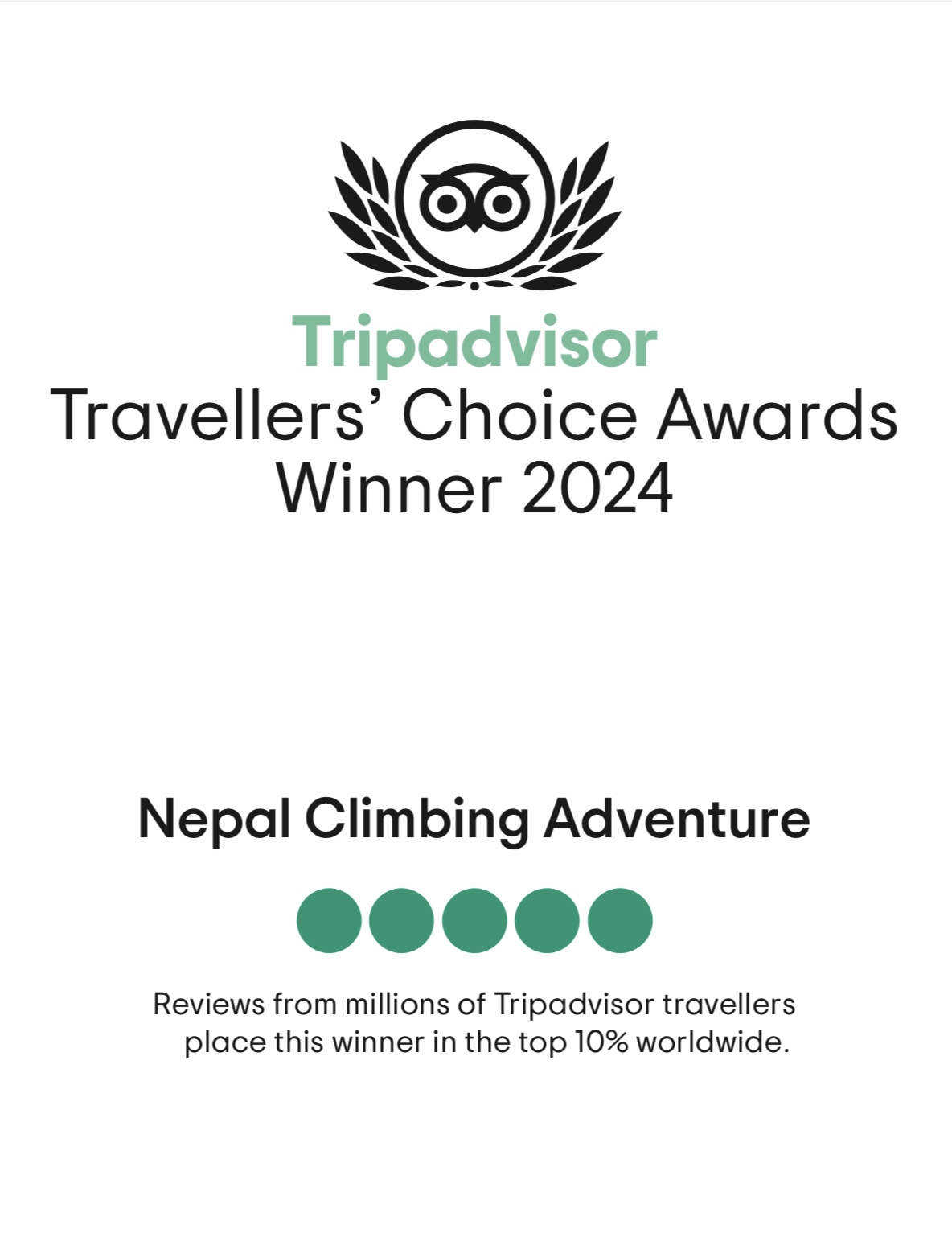Here is a wonderful adventure for people who love to trek and climb mountains. Everest Base Camp Trek with Lobuche Peak Climbing adventure offers you the experience of beautiful adventures in the mountains.
Overview
Here is a wonderful adventure for people who love to trek and climb mountains. This adventure combines trekking and climbing at a go. Everest Base Camp Trek with Lobuche Peak Climbing adventure offers you the experience of beautiful adventures in the mountains.
This trip is an ideal adventure for people who love to be in the mountains. You will traverse the trail that takes you to Everest Base Camp Trek and later on to Lobuche Peak Climbing.
Lobuche to Everest base camp distance is around 6 hours. You need to trek from Everest Base Camp (17,575') to Lobuche High Camp (17,716'). Acclimatize properly and step ascent at your own pace. You need not rush, because this trip is for your experience and not a part of the race. Listen to your body and communicate with a guide in case of any difficulty. Everest's actual summit cannot be seen from the Base Camp due to its structure. Lobuche, situated at an altitude of around 4,940 meters (16,210 ft), is about 150 kilometers (93 mi) east of Kathmandu, the capital of Nepal. It is positioned close to the base of the Khumbu Glacier, approximately 8.5 km southwest of the Everest Base Camp. The Lobuche base camp altitude is worth the struggle along the trek.
Everest base camp with Lobuche Peak is a thrilling journey among nature to connect with your soul around the beautiful surroundings. This trek offers unique travel along the way. Passing through rugged trails with limited facilities, you will learn to adapt to the tough situation. Lobuche Peak climbing EBC trek is an experience where you will learn new things throughout the trek. The local people will inspire you to live a life with minimal expectations in such difficult terrain. Despite limited facilities and a difficult lifestyle, the Local culture and traditions reflect the happiness of staying together.
The Everest Base Camp trek including the Lobuche Peak climb is a journey where you get your expectations exceeded. Challenge yourself and embark on this incredible adventure to witness the majestic glory of Everest firsthand. You have two options for the journey: you can either travel solo or join a group. Upon choosing a group, you can meet fellow trekkers, share memories and experiences, and make new acquaintances. However, if you prefer to travel alone on a solo trek, you can still have a peaceful and safe journey by hiring a knowledgeable guide. This way, you can enjoy the adventure with better interaction and insights from your guide.
Lobuche Peak climbs with EBC trek is a combined experience that combines Lobuche Peak climbing along with Mount Everest. It offers a unique blend of thrill among the peaceful nature. The trek usually takes 19 days. However, the Everest Base Camp Trek with Lobuche Peak Climbing price usually depends on the acclimatization days included and the chosen route along with the pace of the trekker.
While traveling Everest Base Camp trekking and Lobuche Peak climbing, if you wish to go for another sideways trip, the Gokyo Valley trek is an ideal match. It is a magnificent trek that lies in the Everest region of Nepal. Trekking to Everest Base Camp and climbing Lobuche Peak leaves you with amazing experiences throughout the trek.
What do you see during the Everest Base Camp Trek with Lobuche Peak Climbing?
As a combination of two beautiful adventures in the mountains, Everest base camp with Lobuche Peak offers the best of the mountains. You experience trekking and climbing at a go. Trekking through beautiful trails in the Khumbu leads you to the base camp of the highest mountain on earth. Reaching the Everest base camp on foot is a wonderful experience of trekking.
While you traverse the trail up toward the base camp, you can enjoy the view of magnificent mountains including Mt. Everest. You will also get to enjoy the beauty of the local Sherpa settlements along the trail.
Later on, when you go climbing Lobuche Peak, it offers you one of the best climbing experiences. While the climbing itself is a wonderful adventure, the view that you can enjoy in the surroundings makes it even more wonderful.
Reasons this trip becomes an Experience
Nepal Climbing Adventure always strives to offer an adventure traveling experience that you can cherish. While the Everest Base Camp Trek with Lobuche Peak Climbing is beautiful, your experience of trekking there becomes even more beautiful with us.
By the time we take you on the adventure and bring you back, we take one step ahead to offer you a beautiful experience. We keep your safety and happiness is our top priority and you will experience the same during the trip.
Going on an adventure with us to Everest Base Camp and Lobuche Island Peak is traveling in safe hands.
Everest Base Camp Trek with Lobuche Peak Climbing Highlights
- Witness stunning vistas of iconic peaks including Everest, Lhotse, Makalu, and Ama Dablam.
- Explore the Khumbu Glacier and take in the dramatic landscape of the base camp.
- Summit Lobuche East Peak (6,119m) and enjoy an exhilarating climbing experience.
- Traverse glaciers and navigate technical climbing sections for a rewarding ascent.
- Explore traditional Sherpa villages such as Namche Bazaar, Phakding, and Pangboche.
- Scenic flight from Kathmandu to Lukla with breathtaking aerial views of the Himalayas.
- Experience the dramatic landing at Lukla Airport, known for its challenging runway.
- Camp at Lobuche East High Camp (5,800m) for a unique high-altitude experience.
- Participate in local rituals and experience the hospitality of the mountain communities.
- Witness the dramatic shift in scenery as you ascend through different altitudes.
Everest Base Camp Trek with Lobuche Peak Climbing Cost
The cost for the Lobuche Peak ascent along with the Everest Base Camp trek depends on many factors like itinerary, chosen route, number of people, and expected luxury. Although the average cost ranges between $2,000 to $2500.
This cost is comparatively less in the context of Nepali citizens. Climbing Lobuche Peak and trekking to Everest Base camp cost for Nepali usually ranges from NPR 150000 to 200000.
Difficulties of Everest Base Camp Trek with Lobuche East Peak Climbing
The Everest Base Camp Trek with Lobuche East Peak Climbing is a challenging adventure that combines high-altitude trekking with technical climbing. Participants should be prepared for various difficulties, including physical, environmental, and psychological challenges. You need to climb Lobuche Peak and trek to Everest Base Camp along this trip. Here are some of the primary difficulties you may encounter during this expedition:
Let us view the difficulties of Everest Base Camp trek plus Lobuche Peak summit one by one:
Altitude Sickness: One of the most significant challenges is dealing with high altitude, which can cause altitude sickness. Symptoms include headaches, nausea, dizziness, and shortness of breath. Proper acclimatization is crucial to minimize these effects. The trek involves ascending to an altitude of 5,364 meters at Everest Base Camp and climbing to 6,119 meters at Lobuche East Peak.
Trekking Terrain: The trek to Everest Base Camp involves long days of walking on rugged and uneven terrain. Trekkers need to be in good physical condition to handle the daily hikes that can last 5-7 hours, with some days requiring even longer durations. The trail includes steep ascents and descents, rocky paths, and sometimes icy sections.
Cold Temperatures: Temperatures can drop significantly, especially at night and at higher altitudes. Climbers need to be prepared for extreme cold, with temperatures potentially falling below -20°C. Proper clothing and gear are essential to stay warm and prevent hypothermia.
Mental Stamina: The trek and climb require strong mental fortitude. The physical exertion, high altitude, and challenging conditions can be mentally draining. Staying motivated and maintaining a positive mindset is essential to overcome these challenges.
Climbing Effort: The climb to Lobuche East Peak adds an additional layer of difficulty. It requires technical climbing skills, including the use of crampons, ice axes, and ropes. Climbers must be prepared for strenuous physical exertion and should have prior experience in mountaineering to handle the technical aspects of the climb.
Best time for Everest Base Camp and Lobuche East Peak Trek
Everest Base Camp and Lobuche Peak adventure can be experienced at its fullest only when traveled at the best time. For that, you need to know about the ebc trek with Lobuche peak climbing weather conditions.
When planning your Everest Base Camp and Lobuche East Peak trek, selecting the right season is crucial for ensuring the best weather conditions, optimal views, and a more enjoyable experience. The two primary trekking seasons in the Everest region are pre-monsoon (spring) and post-monsoon (autumn).
Spring (March to May):
Highlights:
- Mild Weather: Daytime temperatures are pleasant, ranging from 10°C to 15°C at lower altitudes. Evenings and nights can be colder, especially at higher elevations.
- Clear Skies: Early spring often brings clear skies, offering stunning views of the Himalayan peaks.
- Rhododendron Blooms: The trails are adorned with colorful rhododendron blossoms, adding a vibrant touch to the trek.
- Ideal Climbing Conditions: Conditions for climbing Lobuche East Peak are generally favorable, with stable weather and good snow quality.
Considerations:
- Increasing Crowds: As the season progresses, the trails can become crowded with trekkers.
- Warm Clothing Required: Temperatures can still drop significantly, especially at night and at higher elevations, so warm clothing is essential.
Autumn (September to November)
Highlights:
- Stable Weather: Autumn offers the most stable weather conditions, with clear skies and minimal rainfall, making it ideal for trekking and climbing.
- Clear Views: Post-monsoon skies are typically the clearest, providing breathtaking views of Everest and surrounding peaks.
- Comfortable Temperatures: Daytime temperatures are moderate, making trekking comfortable. Nights can be cold, especially at higher altitudes.
- Festive Atmosphere: This season aligns with major festivals like Dashain and Tihar, allowing trekkers to experience local culture and festivities.
Considerations:
- High Traffic: Autumn is the peak trekking season, so expect more fellow trekkers on the trails and in teahouses.
- Booking in Advance: Due to the popularity of this season, it's advisable to book accommodation and flights well in advance.
Other Seasons:
Winter (December to February):
- Pros: Fewer crowds, stunning snow-covered landscapes, and a tranquil atmosphere.
- Cons: Extremely cold temperatures, especially at night and at higher elevations. Some teahouses may be closed, and trails can be more challenging due to snow and ice.
Monsoon (June to August):
- Pros: Lush green landscapes and fewer trekkers.
- Cons: Heavy rainfall, leeches, slippery trails, and less clear mountain views. Flights to and from Lukla are frequently delayed or canceled due to poor weather.
Outline for Lobuche Peak Itinerary
Lobuche peak climbing with Everest base camp trek follows the following itinerary:
Day 01: Arrival in Kathmandu (1400m)
Day 02: Sightseeing Tour in Kathmandu
Day 03: Kathmandu – Phakding (2,680m)
Day 04: Phakding – Namche Bazar (3,440m)
Day 05: Acclimatization Day
Day 06: Namche – Tengboche (3,860m)
Day 07: Tengboche – Dingboche (4,410m)
Day 08: Acclimatization Day
Day 09: Dingboche – Lobuche (4,940m)
Day 10: Lobuche – Everest Base Camp (5,364m) – Gorakshep (5,164m)
Day 11: Gorak Shep – Kalapathar (5,545m) – Lobuche (4,910m)
Day 12: Lobuche - Lobuche East High Camp (5,800m)
Day 13: Lobuche East Peak Summit (6,119m)
Day 14: Contingency Day
Day 15: High Camp - Pangboche
Day 16: Pangboche - Namche (3,440m)
Day 17: Namche - Lukla (2,860m)
Day 18: Lukla – Kathmandu (1,400m)
Day 19: Departure Day
Accommodation and Food During the Trek
Everest base camp trek with the Lobuche Peak climb Accommodation:
During the EBC trek with Lobuche Peak climb, accommodations range from comfortable hotels in Kathmandu to basic teahouses in the mountains and camping during the peak climb. Here’s what you can expect:
-
Kathmandu: Your journey begins and ends in Kathmandu, where you will stay in a comfortable hotel with modern amenities such as Wi-Fi, hot showers, and delicious meals. It's a great place to relax and prepare for your trek.
-
Teahouses: Once you start the trek, teahouses will be your primary accommodation. These are basic lodges run by local families. They provide a warm bed, often in shared rooms, and communal dining areas. Most teahouses offer clean but simple facilities, including shared bathrooms. The higher you go, the more basic the amenities become. In popular stops like Namche Bazaar, you can find teahouses with hot showers and Wi-Fi (usually for an extra charge).
-
Camping: When you reach the Lobuche East High Camp and during the summit climb, you will stay in tents. Camping gear, including sleeping bags and mattresses, is usually provided by the trekking company. Expect rugged conditions with meals prepared by the expedition cook team.
Food: The food along Everest Base Camp and Lobuche Peak climbing adventure is hearty and designed to provide the energy needed for trekking at high altitudes. Here’s a look at what’s typically available:
-
Breakfast: Common breakfast items include porridge, toast, eggs, pancakes, and Tibetan bread. You can also find tea, coffee, and sometimes fruit juices.
- Lunch and Dinner: Meals usually consist of traditional Nepali dishes like dal bhat (rice with lentils and vegetable curry), as well as momos (dumplings), noodles, pasta, and fried rice. Western dishes such as pizza, burgers, and spaghetti are also available in more popular teahouses. Soups are common and are a good source of hydration and warmth.
- Snacks: Along the trek, you can purchase snacks like chocolate bars, biscuits, and nuts from tea houses or small shops. It’s advisable to bring some of your favorite energy snacks from Kathmandu as well.
- Special Diets: Vegetarian options are widely available, but it’s best to inform your trekking company of any specific dietary requirements in advance to ensure they can accommodate your needs.
What is included?
- All types of organizational requirements
- All trekking and climbing paper works and permits
- All airport and hotel transfers
- Welcome and farewell dinner
- Accommodation and meals during the whole of the expedition
- Flight from Kathmandu to Lukla and back
- Government and local taxes
- Reference notes to plan your trip
- An experienced English-speaking climbing guide, assistant climbing guide, and Sherpa porter including their salary, insurance, food, lodging, and all equipment
- A comprehensive medical kit
- Facilities of Email and satellite phones in base camp
- Necessary oxygen bottles
- Written and photo internet dispatches to send your progress to your family
What is not included?
- Nepal Visa fee(bring small denomination cash USD and two passport photographs)
- International airfare
- Excess baggage charges
- Extra night accommodation apart from the schedule due to any reasons
- Lunch and evening meals in case of early return than the scheduled itinerary
- Travel and rescue insurance
- Charges for Email and satellite phones
- Charge for extra Sherpa porter (if required)
- Personal expenses
- Tips for Climbing Guide and Sherpa
There are a number of things that you need to keep in mind if you ever plan for your vacation. Because you want to make the most out of your limited time, it is truly a hectic job for you to find a trustworthy and experienced traveling companion. With Nepal Climbing, you have your problem solved already as we are one of the leading Trekking and Mountaineering organizations in Nepal and have been providing first class service in several travelling packages across the country for many years.
We prioritize your satisfaction and safety
At Nepal Climbing Adventure, our ultimate objective is to arrange the programs for you to make the most out of your valuable time. We value your satisfaction, adventure, amusement and safety. Regardless of whether you are searching for stunning perspectives along the trekking trails in Himalayan mountain range or widely acclaimed, heavenly attractions with developed societies, our exposure and experience in travel business will help you ensure your requirements are met.
We have professional staffs and service
We trust that extraordinary staff lead awesome administration. That is the reason we are collaborated with experienced and eager individuals. We possess authorized and government certified guides who are very much furnished with broad learning of Nepali communities and traditions. They additionally have familiar English speaking abilities and hierarchical capacities to encourage all types trekking groups.
Responsible Tourism and social values
We are endeavoring to lessen the effect of tourism by guaranteeing our staff are very much aware of ecological issues. We are doing our best to create less waste as could be expected under the circumstances and make a point to reclaim non-compostable wastes. We outline our itineraries and work in the field guided by the standards of ecotourism and reasonable tourism. Moreover, all our staff have been given ecological preparing and are extremely aware to the eco-system we enter. Additionally, we are adhering to sustainable assets of energy. Our guides will share you the social values, culture and religious harmony for better understanding the groups you visit.
Customizable Service
Our promise is to provide you with the travelling packages customizable according to your demand fulfilling your budget criteria. So, we can facilitate a minimum of 2 individuals with a personalized service at a reasonable cost.
Great trip to Mera and Island Peak
Great company and Chris was always ready to answer. Just ask and you get a reply very soon. Everything was good organized and I could change everything as I wanted so I got a Mera & Island Peak tour including Everest Basecamp. I got a really good and experienced guide and porter for my private trip. I booked through bookmundi which made payment very easy. I met Chris in Kathmandu before and after the trip and he is very kind - you are always welcome in the office. I had a duffelbag and a sleepingbag included and it was good quality. So thank you for organizing a great trip.
Christoffer Michels
Online Payment
Or
WIRE TRANSFER
Bank Details:
Account Holder's Name: Nepal Climbing Adventure Pvt. Ltd.
Bank Name: Himalayan Bank Ltd.
Account Number: 01907449340018
Account Type: USD
Address: Thamel, Kathmandu, Nepal
SWIFT CODE: HIMANPKA
For more detail contact us:
Krishna Subedi (Chris Chhetri): +977 9851076791 (24/7, Call/Viber/Watsapp)
We recommend our guests have a valid insurance policy before undertaking an adventure in Nepal Himalaya. During treks and expeditions, the insurance should cover for expenses such as air ambulance, helicopter rescue, and medical care. As an adventure operator, we (NCA), are not permitted to arrange or sell insurance packages here in Nepal as per the Government of Nepal.
Gears and Equipment for Everest Base Camp and Lobuche Peak Trek Package
Lobuche Peak climb and Everest Base Camp route traverse through various rugged and rough paths. It is when you need proper gear and trek equipment for safe travels along Lobuche Peak climbing with EBC.
Clothing for Climbing Lobuche Peak via Everest Base Camp:
- Base Layers: Moisture-wicking thermal tops and bottoms.
- Insulating Layers: Fleece jacket, down jacket, and insulated pants.
- Outer Layers: Waterproof and windproof jacket and pants.
- Trekking Clothes: Lightweight trekking pants, long and short-sleeve shirts.
- Gloves: Lightweight gloves for trekking and insulated gloves for climbing.
- Hats: Sunhat for daytime and a warm hat for the evenings.
Footwear :
- Trekking Boots: Sturdy, well-fitted boots with good ankle support.
- Climbing Boots: Insulated double-layered boots suitable for high-altitude climbing.
- Trekking Socks: Moisture-wicking socks to keep your feet dry.
- Climbing Socks: Warm, thermal socks for cold conditions.
Climbing Gear:
- Climbing Helmet: Essential for protection from falling rocks and ice.
- Harness: Comfortable and adjustable for secure climbing.
- Crampons: Suitable for your climbing boots.
- IceAxe: For climbing steep sections and self-arresting.
- Carabiners: A mix of locking and non-locking for securing ropes.
- Ropes: Provided by the trekking company for climbing and safety.
Other Essentials:
Other essentials needed for the Everest Base Camp and Lobuche Peak trek package are listed below.
- Backpack: 30-40 liters for day use with a rain cover.
- Duffel Bag: For carrying your gear, usually transported by porters.
- Sleeping Bag: Rated for -20°C or lower, provided during the climb.
- Headlamp: With extra batteries for early starts and evening use.
- Trekking Poles: To help with balance and reduce strain on your knees.
- Sunglasses: UV protection to protect your eyes from glare and snow blindness.
- Water Bottles/Hydration System: To stay hydrated; consider insulated bottles for colder temperatures.
- First Aid Kit: Basic supplies including blister treatments, bandages, and any personal medications.
Personal Items: Sunscreen, lip balm, toiletries, camera, and extra batteries or power banks.
Frequently Asked Questions (FAQ’s)
How high is the Base Camp at Lobuche Peak?
The Base Camp at Lobuche Peak is situated at approximately 4,950 meters (16,240 feet). This elevation provides a strategic point for acclimatization before attempting the summit.
What is the most difficult part of Everest Base Camp Trek?
The most challenging part of the Everest Base Camp Trek is often the ascent to Kala Patthar. This section involves a steep climb at an altitude of 5,545 meters (18,192 feet), where the air is thin, making breathing difficult and the physical exertion more intense.
Can you see Everest from Lobuche Peak?
Yes, from the summit of Lobuche Peak, you get an impressive panoramic view that includes Mount Everest. The view also encompasses other majestic peaks like Lhotse, Nuptse, Ama Dablam, and many more, providing a rewarding visual experience.
How difficult is Everest Base Camp Trek with Island Peak Climbing?
Combining the Everest Base Camp Trek with Island Peak Climbing is a strenuous adventure. The trek itself involves high-altitude trekking with significant daily altitude gains. Adding the technical climb of Island Peak (6,189 meters or 20,305 feet) requires physical fitness, stamina, and basic mountaineering skills, including the use of crampons, ropes, and ice axes.
What are the permits required for Everest Base Camp Trek with Lobuche Peak Climbing Expedition?
- Sagarmatha National Park Permit: This is required for entering the Everest region.
- TIMS (Trekkers' Information Management System) Card: Necessary for trekking in Nepal.
- Lobuche Peak Climbing Permit: Issued by the Nepal Mountaineering Association (NMA), required specifically for climbing Lobuche Peak.
Can you climb Everest Base Camp Trek with Lobuche Peak Climbing without a guide?
While it is legally possible to trek to Everest Base Camp and climb Lobuche Peak without a guide, it is not recommended. The region's high altitude, challenging terrain, and unpredictable weather can be dangerous. Having a guide enhances safety, provides local knowledge, and increases your chances of a successful summit.
How to prepare for Lobuche Peak climb?
Preparing for Lobuche Peak involves several key steps:
- Physical Training- Train your body for upcoming days
- Acclimatization- Rest days required inorder to adapt your body to the temperature
- Technical Skills - Skills to use tools like axes, ropes etc.
- Mental Preparation- Have patience and step every ascent with a positive attitude.
What is the altitude of Lobuche Peak?
Lobuche Peak stands at an altitude of 6,119 meters (20,075 feet). This makes it one of the challenging trekking peaks in Nepal, requiring both physical fitness and technical climbing skills.
When is the best season for Everest Base Camp Trek combined with Lobuche Peak Climb?
The best seasons for this trek and climb are pre-monsoon (March to May) and post-monsoon (September to November). During these times, the weather is generally stable, the skies are clear, and temperatures are favorable for trekking and climbing.
Why do the Everest Base Camp Trek with Lobuche Peak Climbing?
Combining the Everest Base Camp Trek with Lobuche Peak Climbing offers a unique adventure. You get to experience the iconic trek to Everest Base Camp, witnessing the grandeur of the world's highest peak. Additionally, summiting Lobuche Peak adds a thrilling mountaineering challenge, rewarding you with stunning panoramic views and a sense of accomplishment.





















 Chris Chhetri
Chris Chhetri